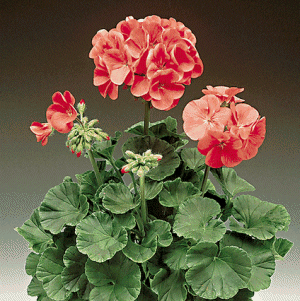Here at Pinellas County Extension we strive to deliver the most current research based information available.
This year we began using blogs like this one and several others to make that information even more accessible. To help make sure that you as the reader are getting the most from our blogs we would like you to take a short survey. Please select the link below to access the online survey. Your feedback is greatly appreciated and your responses will be completely anonymous.
https://www.surveymonkey.com/s.aspx?sm=U1FUx_2f3U_2favOG54FvmED7g_3d_3d
Thank you for your time and continued support.
Thursday, October 23, 2008
Monday, October 6, 2008
Flowers for Fall and Beyond
By Pam Brown, Urban Horticulture Extension Agent

It is starting to get cooler and here in Florida that means that we can plant a wider range of annual flowers for color in the landscape. Some people say that fall and winter in central and south Florida is like spring in the rest of the country. So, as it gets cooler you can start thinking about planting geraniums, alyssum, wax begonia, impatiens, Marguerite daisy, pansy, lobelia, petunias, verbena, dianthus, nasturtium, and many more.
Decide which flowers you want to plant and then prepare the bed area. Incorporate organic matter and a complete slow release fertilizer into the soil. Now you are ready to purchase and plant your flowers. Choose plants that are short, uniformly green and that do not have browning leaves. Look carefully for signs of fungus or insect pests too. Transplants that are in bud, but not in full bloom will establish better and give you the best display.
We can still have some very warm days and rain is not as reliable, so be sure to water your new plantings every day that we don’t have rain for about two weeks. Then you can cut back and only water when the soil feels dry. Applying an organic mulch will help retain water in the soil, but be careful to leave about a 2 – 3 inch area around the base of each plant free of mulch. Mulch around the base can encourage fungal disease.
Annual flowers grow very fast so you may need to give them some additional fertilizer about midway through the growing season. Keep the dead flower heads cut off and you should be able to enjoy these flowers until the spring.
For additional information, see the University of Florida/IFAS Extension publication Bedding Plants: Selection, Establishment and Maintenance at http://edis.ifas.ufl.edu/MG319.

It is starting to get cooler and here in Florida that means that we can plant a wider range of annual flowers for color in the landscape. Some people say that fall and winter in central and south Florida is like spring in the rest of the country. So, as it gets cooler you can start thinking about planting geraniums, alyssum, wax begonia, impatiens, Marguerite daisy, pansy, lobelia, petunias, verbena, dianthus, nasturtium, and many more.
Decide which flowers you want to plant and then prepare the bed area. Incorporate organic matter and a complete slow release fertilizer into the soil. Now you are ready to purchase and plant your flowers. Choose plants that are short, uniformly green and that do not have browning leaves. Look carefully for signs of fungus or insect pests too. Transplants that are in bud, but not in full bloom will establish better and give you the best display.

We can still have some very warm days and rain is not as reliable, so be sure to water your new plantings every day that we don’t have rain for about two weeks. Then you can cut back and only water when the soil feels dry. Applying an organic mulch will help retain water in the soil, but be careful to leave about a 2 – 3 inch area around the base of each plant free of mulch. Mulch around the base can encourage fungal disease.
Annual flowers grow very fast so you may need to give them some additional fertilizer about midway through the growing season. Keep the dead flower heads cut off and you should be able to enjoy these flowers until the spring.
For additional information, see the University of Florida/IFAS Extension publication Bedding Plants: Selection, Establishment and Maintenance at http://edis.ifas.ufl.edu/MG319.
Subscribe to:
Posts (Atom)